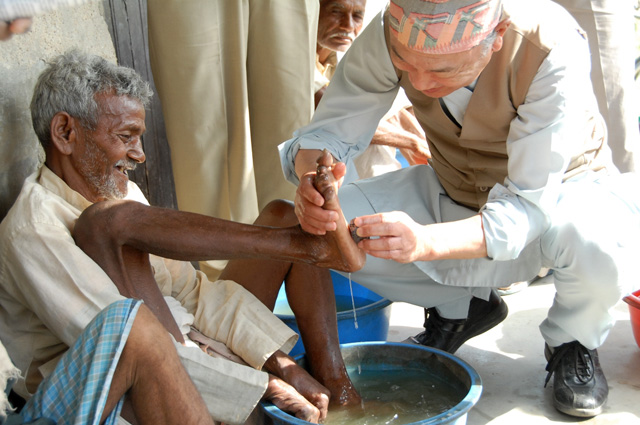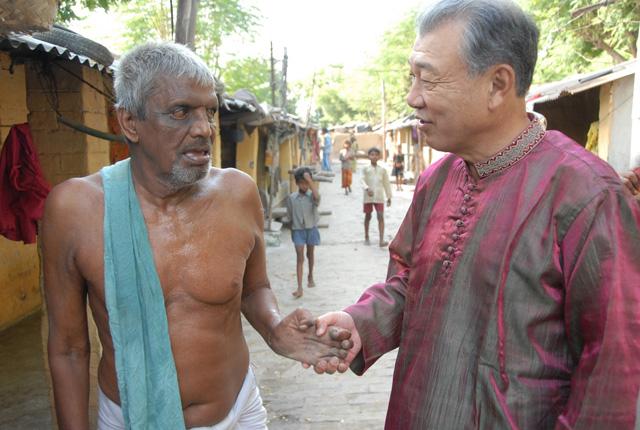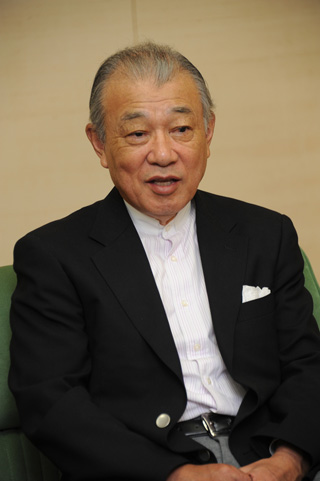Described as the “Mahatma Gandhi” of Japan, The Nippon Foundation’s Chairman Yohei Sasakawa has made it his life’s mission to help eliminate leprosy while also doing everything he can to try and bring an end to the discrimination and human rights violations that leprosy-affected people suffer on a daily basis.
By Matthew Hernon
Also known as Hansen’s disease, leprosy is a chronic bacterial condition that used to be seen as a horrifying, highly contagious disease the caused severe disfigurement. It was also believed to be incurable; however, it has since been discovered that leprosy can be easily treated when caught early and addressed promptly. Additionally the infectious power of the bacterium Mycobacterium Leprae, which causes leprosy, is not very powerful and therefore not highly transmissible. Nonetheless, the stigma attached to the disease remains and that is something that Sasakawa, the World Health Organization’s Goodwill Ambassador for Leprosy Elimination, is determined to change.
On the eve of World Leprosy Day, Weekender met up with the 75-year-old as he explained why leprosy is such an important issue for him and what he would like to see done in the future.
“The first time that I really started to take an interest in leprosy was after I visited a hospital in Korea that was built by my father (Yohei’s father Ryoichi became interested in the disease after somebody in his neighborhood was isolated after being diagnosed with leprosy). Prior to that I was living a very normal, everyday life and honestly speaking my knowledge about the world was limited. Deliberating about my future at the time I was mainly interested in business and basically wondering how I could become rich. That visit to the hospital changed my thinking.
For the first time in my life I was exposed to people really suffering. It made me realize that there are so many issues we don’t see in our daily lives. I was really quite shocked to see the patients back then; the way they looked, the deformation of their faces, I looked into their eyes but couldn’t see any hopes or dreams. It was terrible to see these people living in such horrific conditions, completely shunned from society. It was then I decided to try and do something about it.
One of the most important things I had to do was to try and make people more aware of the disease, attempting to dispel some of the myths that surround it. Leprosy is a sickness that has been looked down on for centuries, even before the Old Testament. In the past people assumed it was either hereditary or extremely infectious. The solution was to quarantine people affected by leprosy so they had no contact with others: in other words they basically became non-existent.
There are a growing number of people who have more knowledge and awareness about the disease these days and attitudes are beginning to change, but we still have a long way to go. Outdated notions persist today and because of this, prejudice is still rife, which makes life even more difficult for sufferers. We need to continue to educate the general public so that they know the myths are completely untrue.
There is always more that we as people can do and I would also like governments and establishments from around the world to step up and really add more weight to this issue. I believe they are not doing enough. I understand that there are diseases such as HIV and malaria that are much more prevalent, have many more patients and are consequently far higher up the food chain in terms of support given by global institutions, but that does not mean leprosy should be de-prioritized.
I am doing all I can to try and get the message across. I spend around 40% of my time abroad, visiting foreign countries in an attempt to persuade heads of states not to neglect the leprosy issue. A lot of my attention is naturally focused on India as around 70% of leprosy patients are concentrated there. (Leprosy was “officially” eliminated in India in 2005 despite the fact that 130,000 new cases are diagnosed every year. Based on the World Heath Organization’s benchmark, a public health problem is considered to be eliminated when there is fewer than one case for every 10,000 people).
For the past decade I have probably been going there on average around seven times a year and each time I attempt to go to all 32 states. I don’t demand anything; I just make polite requests. It is a calm pressure. I think officials see this old man coming all the way from Japan and feel they should do something.
It is a country that is really moving in the right direction regarding the issue of leprosy. Recently an assembly of members of parliament was established to safeguard the implementation of the resolution adopted by the UN Human Rights Council (as well as in the UN General Assembly) in 2010 concerning the “Principle and Guidelines (P&G) for the Elimination of Discrimination against Persons Affected by Leprosy and Their Family Members.”
That resolution gave leprosy sufferers the same rights as everyone else in matters such as marriage, parenthood, citizenship, and work. It was certainly a landmark settlement, yet many patients are still too afraid to speak out in case they might be discriminated against. That is another thing we have tried to change. The Association of People Affected by Leprosy (The National Forum), which was established in India in 2005, not only gives those affected by the disease a platform where they can voice their opinions, but also it gives them an opportunity to come together as one and gain strength from being united.
It is like a dream to see such progress being made, though we can’t stop there. We need to keep going and make sure we put an end to the stigma and discrimination that surrounds leprosy.”
Updated On April 11, 2017










